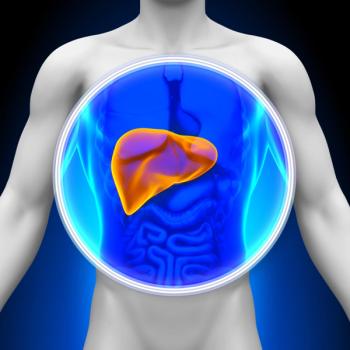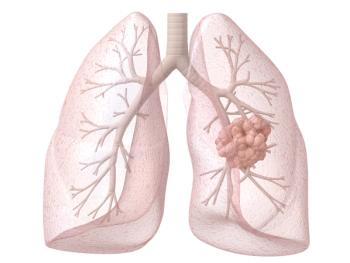
- ONCOLOGY Vol 15 No 7
- Volume 15
- Issue 7
Commentary (Brand et al): Pancreatic Cancer in the Older Patient
Pancreatic cancer is a disease seen predominantly in elderly patients. Compared to younger patients, older patients are more likely to present with early-stage disease and, therefore, may be candidates for aggressive local
Adenocarcinoma of the pancreas is a disease of the elderly, is rarely diagnosed before age 40, and has a peak incidence between the ages of 65 and 79.[1] Dr. Jacobson and coauthors provide a detailed review of the management of elderly patients with pancreatic cancer. They emphasize the glaring omission in the medical literature concerning management of pancreatic cancer in this segment of the population. In this commentary, we will incorporate our multidisciplinary approach for patients with pancreatic cancer, including input from medical oncology, gastroenterology, surgery, and interventional radiology, and highlight the important issues addressed in Dr. Jacobson’s review.
Staging
Patients with pancreatic adenocarcinomas with nodal involvement, vascular invasion, or distant metastases have a median survival of less than 1 year and do not appear to benefit from operative resection alone; therefore, these patients must be staged accurately. We conform to the National Comprehensive Cancer Network practice guidelines and initially stage a patient with a dual-phase helical computed tomography (CT) scan.[2] Diehl et al[3] reported that dual-phase helical CT can predict resectability and unresectability in 90% and 91% of cases, respectively. Although many centers base their decision to perform surgery solely on a CT scan, we also perform an endoscopic ultrasound in all elderly patients to confirm the local extent of disease-specifically, regional lymphadenopathy and vascular involvement.
A tissue diagnosis is preferred in elderly patients prior to pancreatic resection, due to the significant morbidity associated with the procedure. Endoscopic ultrasound affords the opportunity to perform fine-needle aspiration under ultrasound guidance to make a tissue diagnosis or to validate the presence of malignant lymphadenopathy. Data from Chang et al[4] demonstrated that 44% of patients with pancreatic cancer were upstaged by endoscopic ultrasound, with or without the performance of fine-needle aspiration, thereby avoiding surgery.
The authors state that elderly patients present with pancreatic cancer at an earlier stage. Data from the National Cancer Database for 1989 through 1995 demonstrate an age-related trend for stage I disease: age 0 to 49 years, 10.6%; 50 to 59 years, 11.1%; 60 to 69 years, 12.5%; 70 to 79 years, 14.6%; and 80+ years, 16.4%. However, a similar age-related trend was reported for patients who were not staged: age 0 to 49 years, 27.1%; 50 to 59 years, 28.5%; 60 to 69 years, 30.8%; 70 to 79 years, 34.6%; and 80+ years, 44.9%.[5] In this study, only 22% of stage I patients underwent an attempt at tumor resection. The investigators proposed that comorbid conditions, inadequate staging, limited use of pancreatic resection, and/or lack of access to an experienced pancreatic surgeon may have been responsible for the limited number of attempts at curative resection.[5]
Surgery
We evaluate elderly patients for curative resection using "physiologic" age rather than their "chronologic" age. Several studies from major referral centers report comparable perioperative complication rates, and in most instances, survival rates, following pancreatic resection in elderly patients as compared to younger patients. Sosa et al[6] published data showing lower morbidity and mortality rates in high-volume (> 20 total cases/yr) vs low- (< 5 total cases/yr), or medium-volume (5 to 19 total cases/yr) centers. The relative risk of in-hospital death was 19 and 8 times greater in low- and medium-volume centers, respectively, compared to high-volume centers. Thus, we suggest surgical candidates be referred to high-volume centers.
Radiation and Chemotherapy
To date, systemic chemotherapy or radiation therapy for locally unresectable or metastatic pancreatic adenocarcinoma has resulted in only modest improvement in patient survival. As noted by the authors, there are limited data stratifying results by age. It does not appear that age alone should preclude an individual from receiving therapy. However, we share the authors’ concerns regarding an older patient’s ability to tolerate radiation; thus, it is our bias to avoid radiation therapy in the majority of elderly patients. Our standard of care for patients with good performance status, who do not qualify or wish to participate in a clinical trial, is treatment with single-agent gemcitabine (Gemzar). In our experience, gemcitabine is well tolerated in elderly pancreatic cancer patients. Other investigators have reported that gemcitabine is well tolerated in patients with other types of tumors.[7,8]
Palliation
The authors raise several important points regarding palliation. Most importantly, they emphasize the inadequate treatment of pain in the elderly and its resulting adverse effect on quality of life. In most instances, elderly patients can be treated with narcotics. It is essential to place them on a good bowel regimen to avoid constipation. Occasionally, patients may require a celiac plexus block to relieve intractable pain. Celiac plexus block can be performed at surgery or by interventional radiology. Although not mentioned in their review, a celiac plexus block can also be accomplished under endoscopic ultrasound guidance and may be performed at the time of the staging procedure if the patient is found to be unresectable.
The management of biliary and duodenal obstruction for palliation is similar regardless of the patient’s age. For biliary obstruction, placement of a biliary stent via endoscopic retrograde cholangiography is the preferred modality. If this strategy is unsuccessful, percutaneous placement is usually possible. Surgical options are the last resort. In some centers, this can be attempted laparoscopically. In most institutions, the treatment of duodenal obstruction (ie, gastric outlet obstruction) is surgical and consists of a gastrojejunostomy procedure. At our institution as well as others, a palliative gastrojejunostomy can be performed laparoscopically. For selected patients, metal stents can be placed across the duodenal obstruction under endoscopic guidance.
Conclusions
In summary, pancreatic cancer continues to be a challenging disease with a dismal prognosis. We concur with the need for more data on elderly patients to assist in their management. Furthermore, we support the need for clinical trials designed specifically for the treatment of elderly patients. Finally, it is important to make treatment decisions based on physiologic rather than chronologic age.
References:
1. Lillemoe KD, Yeo CJ, Cameron JL: Pancreatic cancer: State ofthe art care. CA Cancer J Clin 50(4):241-268, 2000.
2. Tempero M, Abbruzzese JL, Benson AB, et al: NCCN practiceguidelines for pancreatic cancer, version 2000, pp 1-10. Rockledge, Pa,National Comprehensive Cancer Network, 2000.
3. Diehl SJ, Lehmann KJ, Sadick M, et al: Pancreatic cancer:Value of dual-phase helical CT in assessing resectability. Radiology206(2):373-378, 1998.
4. Chang KJ, Nguyen P, Erickson RA, et al: The clinical utilityof endoscopic ultrasound guided fine-needle aspiration in the diagnosis andstaging of pancreatic carcinoma. Gastrointest Endosc 45(5):387-393, 1997.
5. Sener SF, Fremgen A, Menck HR, et al: Pancreatic cancer: Areport of treatment and survival trends for 100,313 patients diagnosed from1985-1995, using the national cancer database. J Am Coll Surg 189(1):1-7, 1999.
6. Sosa JA, Bowman HM, Gordon TA, et al: Importance of hospitalvolume in the overall management of pancreatic cancer. Ann Surg 228(3):429-438,1998.
7. Ricci S, Antonuzzo A, Galli L, et al: Gemcitabine monotherapyin elderly patients with advanced non-small-cell lung cancer: A multicenterphase II study. Lung Cancer 27:75-80, 2000.
8. Tonato M, Mosconi AM, Martin C: Safety profile ofgemcitabine. Anticancer Drugs 6(suppl 6):27-32, 1995.
Articles in this issue
over 24 years ago
Clinical Radiation Oncologyover 24 years ago
Gemcitabine Active in Patients With Metastatic Breast Cancerover 24 years ago
Irinotecan in Lung and Other Malignanciesover 24 years ago
Once-Yearly Leuprolide for Advanced Prostate Cancer Availableover 24 years ago
Environmental Links to Breast Cancerover 24 years ago
Bush Administration Considering Physician RatingsNewsletter
Stay up to date on recent advances in the multidisciplinary approach to cancer.
































































































